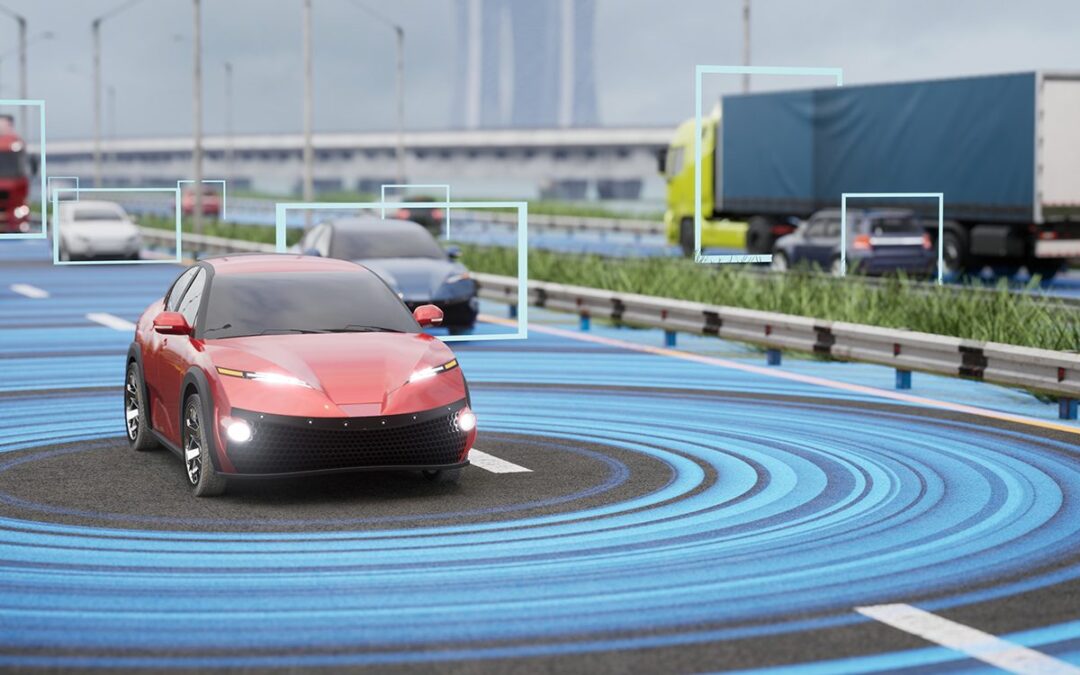There’s no doubt that the widespread introduction of autonomous vehicles will create an unprecedented shift in modern society. Among the largest adjustments will be felt in the insurance space.
Self-driving cars will change the dynamics of motor insurance over the next two decades[1] and beyond. This is because the risk factors associated with autonomous vehicles will change, along with emerging experience of accident rates that informs the motor insurance technical premium costs related to collisions. Other perils like theft and damage may not change but due to technological development, theft cases may decrease.
One of the fundamental changes with autonomous car insurance will be a shift of focus from driver to technology, influencing resulting accident rates. It is expected that the accident frequency will likely reduce by 80% by 2040[1], which will be a substantial reduction.
Today, accidents that are caused by human factors contribute 90%-94% of total accidents [1],[4]. The accident frequency is expected to reduce, but the forecast severity is less certain. There may be additional repair costs for hardware, software, battery, sensors, cameras and more, but the average speed of collisions may also be lower.
The insurance will shift from personal car insurance to product liability because if a vehicle is driven by a driver, personal auto coverage applies.
However, for autonomous vehicles, it is plausible to assume that liability will transfer to the manufacturer supplying the technology. This change in liability is ultimate subject to legal developments as the technology matures. According to the Accenture and Stevens Institute of Technology [2] report, by 2040, personal line insurance will fall by 40%, and product liability insurance will increase by 14%.
The change in the motor insurance scenario will develop over time depending on the level of automation. It is estimated that by 2035 US roads will likely have 23 million fully autonomous vehicles[1].
However, full automation development will be gradual. There are six levels of automation, starting from the manual version to fully autonomous vehicles. In the fully automated version, the car adjusts to different situations using sensors on its own. There will be no driver’s seats in the highest level of automated cars but only the passenger’s seats. The passengers are to mention only a drop location, and the vehicle will drive to the destination. Even the driver’s licence will not be required in such a case, but the software may require approval from the traffic authorities.
What will change?
In Australia, the current risk factors for motor insurance include the driver’s driving history, make of a car, cost of the car, age and gender of the driver, type of insurance policy, geographical location and more. The premium in the insurance sector is determined by the cost of pure risk and the loading for administrative expenses, commissions, cost of solvency, taxes and profit margins. The cost of the pure risk is determined by the risk factors mentioned above. With the driverless car, the risk factors will change, and most of the other elements of premiums will stay. The changes in the risk factors that are likely to come from collision and non-collision reasons are:
1. Change in accident rates (frequency)
2. the cost of repair of technology (sum insured)
3. Increase in risk of technical malfunction
Non-collision
4. Increase in cyber security
5. Change from personal liability to product liability
6. Infrastructure
These risk factors changes will change how motor insurance is looked at now. New and unknown risks will emerge, and older risks will become history. The shape of the car mechanics will change who will also be equipped with knowledge of software engineers. Car insurance will become technology insurance with more focus on hardware and software.
The repair cost may increase as hardware and software repair expenses could be greater than the current engine and other repair costs, but it may reduce if average collision speeds reduce. The focus will change from the quality of the present-day engine to the quality of the software and other accessories like sensors, cameras and a third-party provider of cloud.
This change will generate massive data, which will be one of the critical drivers of the future of car driving and insurance.
Internet service will be at the heart of the entire traffic movement system. The cyber threat will be one of the key risks as any interruption in the internet service will disrupt the entire traffic system on the road resulting in a massive traffic jam. Traffic jams will be a new risk factor that insurance companies have to deal with by considering the pricing. Risk managers will need to learn to address newer risks for their management and upgrade themselves with other emerging changes.
Other types of new risks include when an accident occurs due to mishandling by the owner, resulting in the software misbehaving, leading to an accident. Policy terms and conditions will be essential for such risks and could be subject to dispute. In traditional insurance, few policyholders read the policy bonds and file claims leading to litigation as claim conditions are not insured. With so much technical jargon in autonomous car insurance, the car owners’ may not fully understand the policy conditions.
As a result, litigation can increase, leading to more law firms acting on behalf of customers.
Some other challenges are expected to emerge where an autonomous vehicle could be hacked. For example, ransomware could hold the vehicle hostage under control until payment is made to unlock the software. Other challenges could be criminal or terrorist hijacking through remote control or misusing personal information/data privacy. This will bring a paradigm shift in motor insurance, and it is difficult to say whether the reduction in accident rates is likely to offset these newer risks or newer risks will pose other challenges for pricing and risk management.
Actuaries must prepare themselves for the entirely new world of risks and modeling statistical distribution and their correlation. The introduction of digitalisation in motor insurance will shift the traditional actuarial books towards a combination of understanding the data architecture, data modeling, data analytics, artificial intelligence along with core actuarial principles.
Ethics is another issue that needs to be addressed with autonomous cars.
Such cars are likely to reduce accidents. However, the accidents will not be eliminated. When an accident occurs with the driver in the driving seat, the driver is responsible for their life and death. However, with autonomous cars, the decision to react in an accident situation will be made by the computer program codes written by programmers[3]. Who will be saved in such cases of accidents? Who will decide? How can the programmers decide on the lives of the individuals sitting in the car?
The codes written in different manufactured cars will be from other companies, and how the overall decision at the time of the accident will be made on the lives of the passengers who do not have any control. Should the life of humans rest in the hands of machines based on the interaction of data, so-called intelligent software? Another ethical issue will be the massive radiation that the entire human race will be exposed to? Has there been any study that proves that such radiations are safer?
Summary
There will be a paradigm shift in the future of motor insurance with the introduction of autonomous cars. Car insurance will become technology insurance with more focus on hardware and software. This will change the risk factors determining motor insurance premiums.
There will be a shift from personal car insurance to product liability insurance. The focus will move from current garage-based mechanics to hardware and software centers. Internet and data will be the new life bloodstreams of car movements and insurance. Internet services and cyber security will be new drivers. Traffic jams could be a new phenomenon due to internet congestion.
Actuaries need to add digital knowledge along with modeling techniques of new risks that will be more correlated. Risk managers are to learn on how to mitigate new emerging risks, which will be different. Ethical issues will emerge.
This content was originally published here.
Like this article? Let us know!

